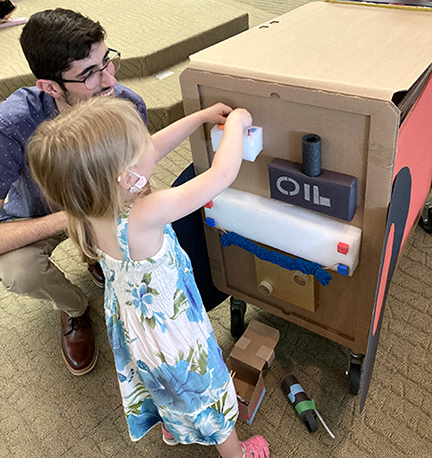 Is your story time tractor running a little rough? Maybe it’s missing a few foam bead plugs or yarn wires? Not to worry! With your handy-dandy toolbox and “can do” spirit, you’ll have everything working in no time!
Is your story time tractor running a little rough? Maybe it’s missing a few foam bead plugs or yarn wires? Not to worry! With your handy-dandy toolbox and “can do” spirit, you’ll have everything working in no time!
We read Tough Chicks written by Cece Meng, and illustrated by Melissa Suber (Clarion Books, 2009). Penny, Polly and Molly are NOT like the other chicks on the farm. Instead of preening feathers, peacefully pecking grain, or cheeping, they are swinging on cow tails, playing in mud, and getting under the hood of Farmer Fred’s tractor to see how it works. The other animals on the farm are annoyed by their antics, but when the tractor breaks down and gets stuck, it’s up to the tough chicks to use their unconventional skills to solve the problem!
You’ll need:
- 1 small box (we used a 4″ x 4″ x 4″ craft box, but a small tissue box works too!)
- Poster board or tagboard
- 2 foam beads
- 2 small rubber bands
- 1 sock
- Cotton balls or polyester fill
- 1 pair of wiggle eyes
- 1 chick beak (paper or self-adhesive foam)
- 1 tractor & tractor engine (more on this below!)
- Scissors and tape for construction
- Markers for decorating
- Hot glue
This story time was essentially two small projects: a chick hand puppet, and a tractor toolbox. Our puppet was a yellow soccer sock (we bought a 10 pair pack on Amazon for about $30) stuffed with poly fill and gathered around the neck with a rubber band. We added wiggle eyes, a self-adhesive foam beak, and a jaunty feather crest.
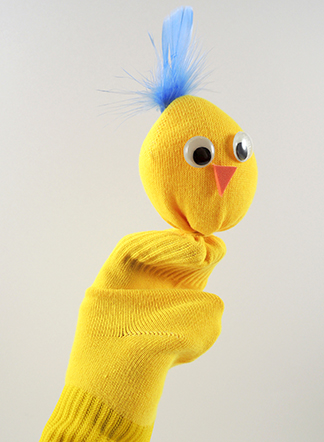 Notice when you place the sock on your hand, you can still use your thumb and fingers to grasp things? It’s an important detail that we’ll return to later! Next up is the tool box:
Notice when you place the sock on your hand, you can still use your thumb and fingers to grasp things? It’s an important detail that we’ll return to later! Next up is the tool box:
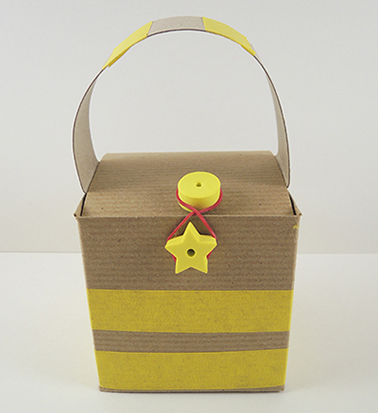 To make the box handle, tab both ends of 1.5″ x 11″ strip of poster board or tagboard, then attach the tabs to the underside of the box lid. Glue 1 foam bead on the top of the lid, and another on the front of the box. Wind a small rubber band around the beads to keep the lid closed while carrying. Decorate the tool box with markers (or use color masking tape like we did).
To make the box handle, tab both ends of 1.5″ x 11″ strip of poster board or tagboard, then attach the tabs to the underside of the box lid. Glue 1 foam bead on the top of the lid, and another on the front of the box. Wind a small rubber band around the beads to keep the lid closed while carrying. Decorate the tool box with markers (or use color masking tape like we did).
Now for the contents of the tool box! These can vary, but here’s what was in our boxes:
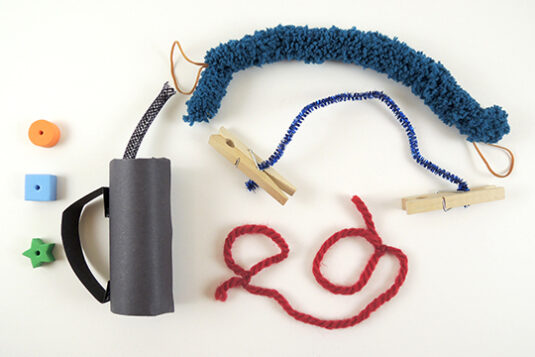 There are 3 foam bead bolts, 1 toilet paper tube oil can, and 3 different tubes and wires. The wires are made of yarn or sparkle stems and have rubber band or clothespin fasteners. All of these items are used to “fix” the engine of this AMAZING book cart tractor Katie constructed out of boxes, tubes, and poster board!
There are 3 foam bead bolts, 1 toilet paper tube oil can, and 3 different tubes and wires. The wires are made of yarn or sparkle stems and have rubber band or clothespin fasteners. All of these items are used to “fix” the engine of this AMAZING book cart tractor Katie constructed out of boxes, tubes, and poster board!
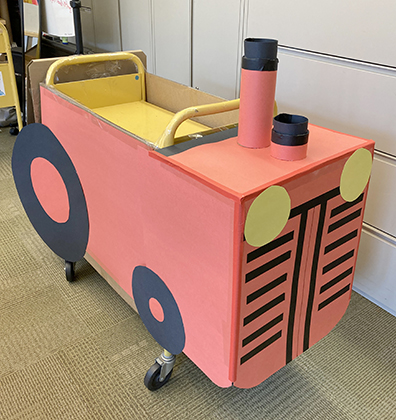 The back of the tractor flipped up to reveal the engine, which had parts missing. Kids then used the various items from their tool kits to repair it…all while wearing their chick hand puppet!
The back of the tractor flipped up to reveal the engine, which had parts missing. Kids then used the various items from their tool kits to repair it…all while wearing their chick hand puppet!
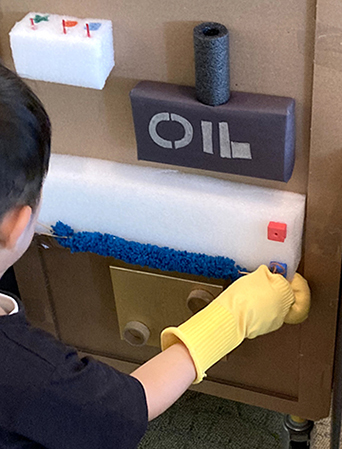 We constructed the tractor’s engine out of various upcycled boxes and materials (I especially love the mac & cheese box oil tank). You can also see how our tool box items fit on the engine below:
We constructed the tractor’s engine out of various upcycled boxes and materials (I especially love the mac & cheese box oil tank). You can also see how our tool box items fit on the engine below:
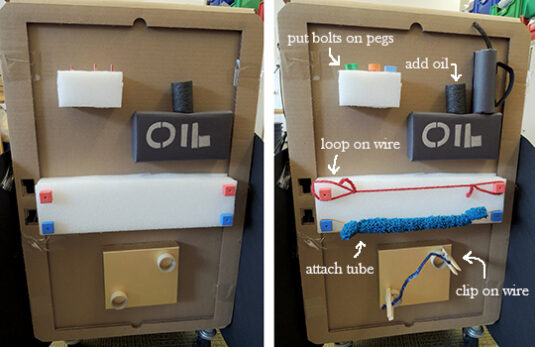
When it was each kid’s turn, they would bring their tool kits to the “broken” tractor, then use their items (with assistance from their hand puppet) to put everything in the proper place. When the engine was “fixed,” I played an audio clip of a tractor engine roaring to life!

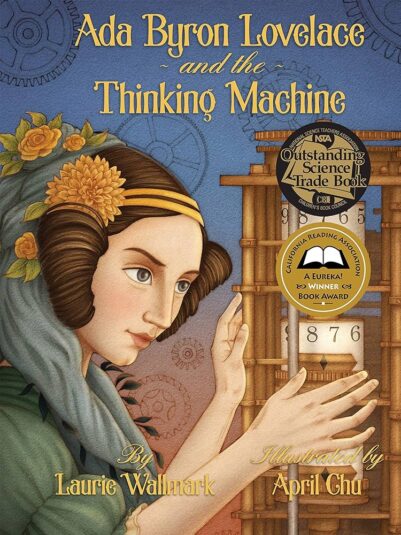
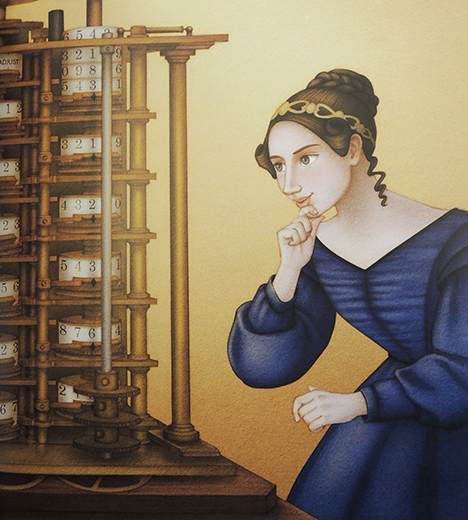
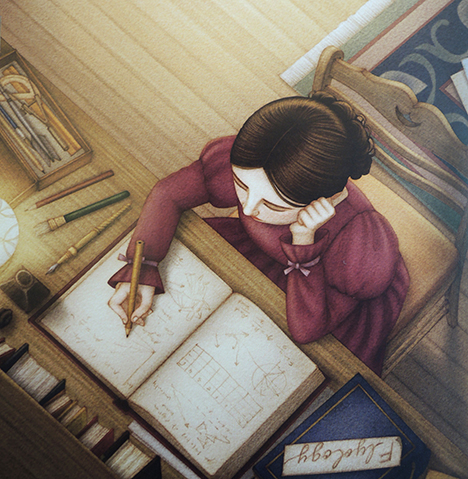
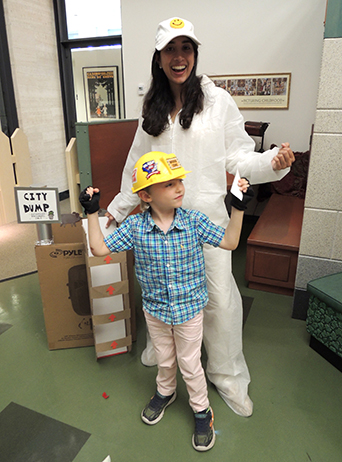
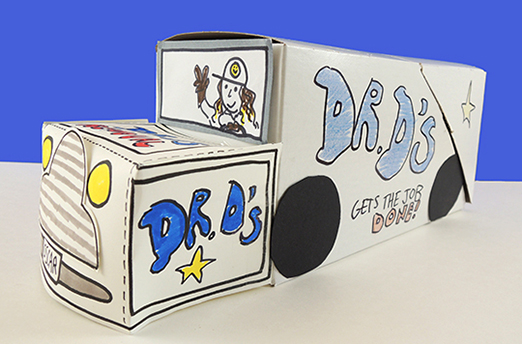 You’ll need:
You’ll need: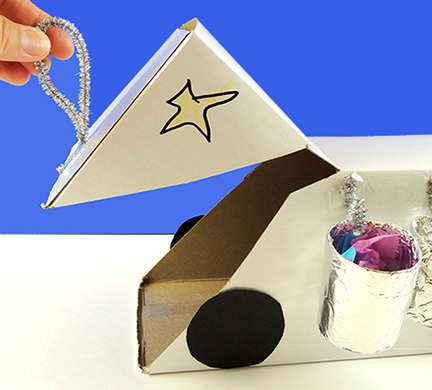
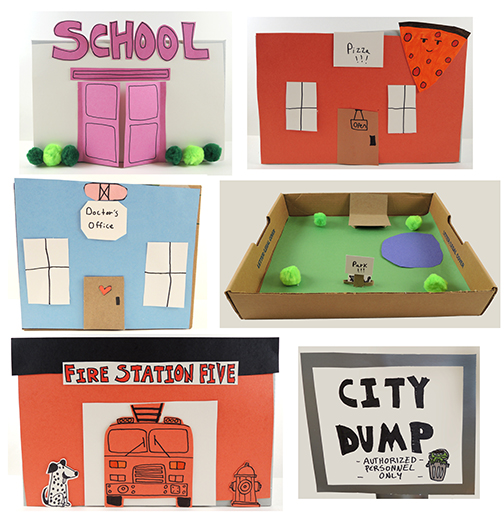 We constructed the buildings and park with shoe boxes and box lids, but the city dump was much larger. It was big box with a removable chute that allowed kids to tip their garbage and send it sliding into the dump. You can see the whole thing here, modeled by our awesome grad student volunteer Shruti Sharma (who was also a
We constructed the buildings and park with shoe boxes and box lids, but the city dump was much larger. It was big box with a removable chute that allowed kids to tip their garbage and send it sliding into the dump. You can see the whole thing here, modeled by our awesome grad student volunteer Shruti Sharma (who was also a 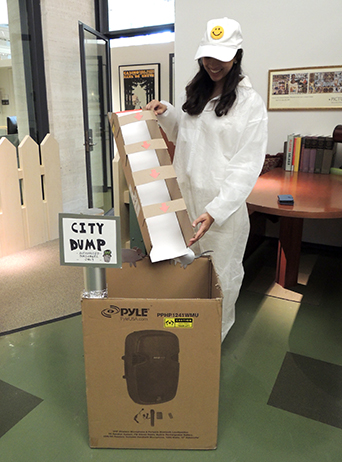 Once every kid had made a truck, they received a “route card” that showed the order in which they needed to visit each place. Since there were 5 sites, I made 5 routes, all different so they story time kids wouldn’t clump together. Each route, of course, ended at the city dump.
Once every kid had made a truck, they received a “route card” that showed the order in which they needed to visit each place. Since there were 5 sites, I made 5 routes, all different so they story time kids wouldn’t clump together. Each route, of course, ended at the city dump.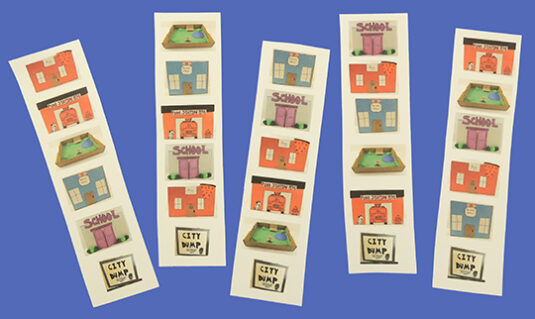 We placed the buildings around the library, and each had it’s own unique “garbage” to be collected. Mostly, these were little do-dads and art supplies from the cabinet. The school’s garbage, for example, are leftover wooden letters from
We placed the buildings around the library, and each had it’s own unique “garbage” to be collected. Mostly, these were little do-dads and art supplies from the cabinet. The school’s garbage, for example, are leftover wooden letters from 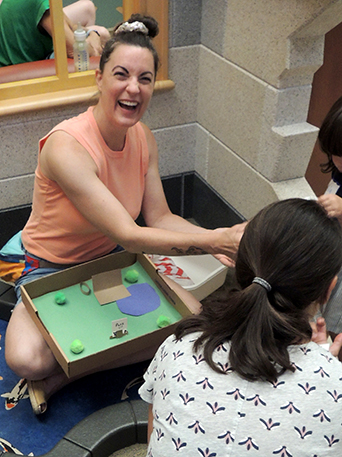 At the city dump, Shruti helped kids slide the garbage down the chute. The back of the big box was cut open, in case kids wanted to take their garbage home. It got a little messy and chaotic. But hey! It IS a dump after all!
At the city dump, Shruti helped kids slide the garbage down the chute. The back of the big box was cut open, in case kids wanted to take their garbage home. It got a little messy and chaotic. But hey! It IS a dump after all!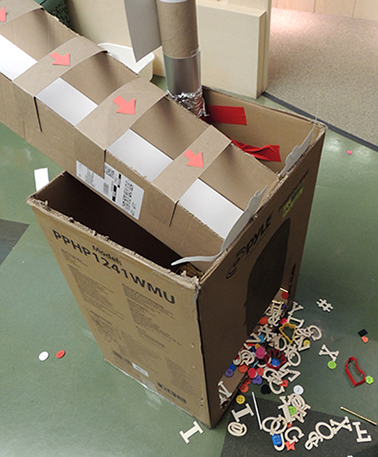 If you would like to do this story time and don’t have time to make the buildings, no worries! Here’s a printable set of the buildings that you can tape to walls and tables. Drive safe, and happy collecting!
If you would like to do this story time and don’t have time to make the buildings, no worries! Here’s a printable set of the buildings that you can tape to walls and tables. Drive safe, and happy collecting!